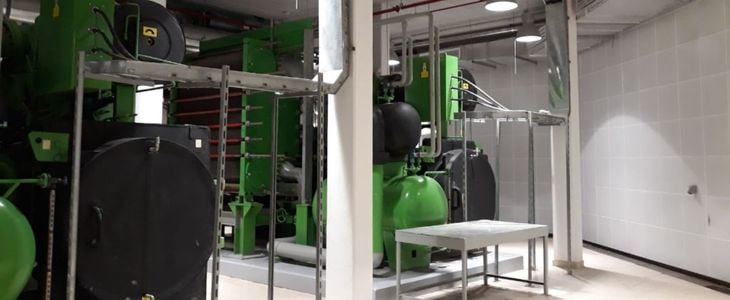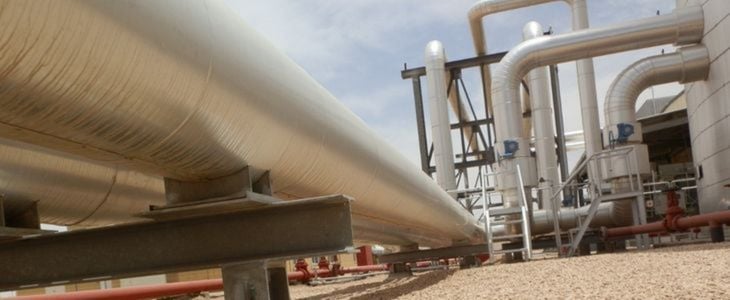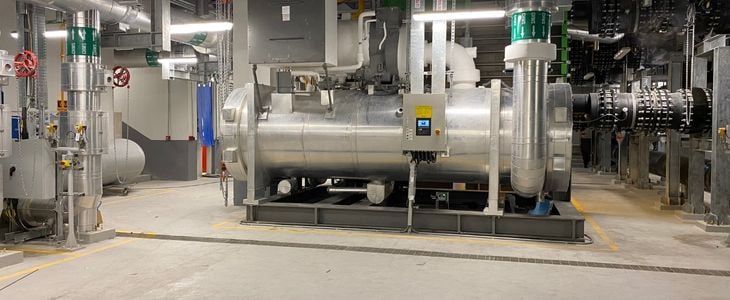In the quest for achieving carbon neutrality, high temperature heat pumps have become one of the key components for the industrial sector, representing a feasible alternative technology that enhances efficiency and minimizes fossil fuel burning.
In fact, the use of high temperature heat pumps and the transition for this model is supported by public projects across the globe, including a EU-funded project that is analyzing the possibility for supplying industrial processes in lower temperature ranges, as well as the incorporation of renewable sources (such as solar, industrial waste heat or seawater heat, among others).
Keep reading to find out about what high temperature heat pumps are, their potential for decarbonizing the industry, and what industry operators can do to access the right equipment.
What are high temperature heat pumps
High temperature heat pumps are designed to operate at higher temperature differentials than conventional heat pumps. As such, they fit within the definition of a conventional heat pump (a device that transfers heat from one place to another, typically from a lower temperature to a higher temperature), but just with different temperature differentials.
This means that heat pumps typically operate at temperatures between 80°C and 120°C, and can achieve COPs (coefficient of performance) of up to 5, depending on the heat source temperature. That is, for every unit of electricity consumed, well-adjusted high temperature heat pumps can produce up to 5 units of heat. All in all, this type of heat pump is able to upgrade low temperature heat sources (such as industrial waste heat).
High temperature heat pumps are used in applications where heat is required at a high temperature. These include industrial processes, but also space heating, and hot water production, also as part of district heating projects.

Working principles and types of high temperature heat pumps
High temperature heat pumps are based on the following basic principle: they’re able to transfer heat from a lower temperature system to a higher temperature one. In order to do so, a refrigeration cycle takes place
The main components of high temperature heat pumps include:
- Evaporator: in charge of absorbing heat from the source (such as air, seawater, or the ground) and converting it into a low pressure, low temperature vapor.
- Compressor: takes low pressure, low temperature vapor and compresses it, with the result of increasing its temperature and pressure.
- Condenser: the high pressure, high temperature vapor flows into the condenser, which turns it back into liquid as vapor releases heat.
- Expansion valve: reduces the pressure of the liquid, causing it to evaporate and start the cycle anew.
Additionally, high temperature heat pumps use other advanced technologies such as oil free, magnetic bearing centrifugal compressor or oil flooded high pressure screw compressors, heat exchangers and refrigerants, all able to withstand high critical temperatures to achieve high pressure differentials.
The potential of high temperature heat pumps in the industry
High temperature industrial heat pumps have been hailed as one of the key technologies that will be able to decarbonize a number of industrial processes as part of numerous heat pump applications in the industry.

This potential has been measured by research papers using techno-economic bottom-up cost optimization models, ensuring the system remains sustainable in both environmental and economic terms.
The industries that could benefit the most from high temperature heat pumps include the pulp and paper sector, as well as the food and beverage industries, due to their use of significant quantities of heat up to 200 °C.
In fact, for industrial processes of up to these temperature values, heat pumps have been found to be able to deliver 730 TWh per year, all whilst avoiding significant tons of CO2 emissions per year by accessing renewable energy sources.
Benefits of high temperature heat pumps
Overall, high temperature heat pumps offer an energy-efficient and environmentally friendly alternative to traditional heating technologies. This is particularly true, as we’ve seen above, for applications where high temperature heat is required.
Some of the benefits of high temperature industrial heat pumps are:
- Increased efficiency: able to deliver up to four units of heat for every unit of energy consumed
- Integration of renewable energies: thanks to their capacity for upgrading low-grade energy, high temperature heat pumps can integrate renewable energy sources such as solar, geothermal or waste heat. As such, they provide a pathway towards industrial decarbonization
- Low maintenance: as they present fewer moving parts, they’re more reliable and easier to maintain

How to access cutting-edge high temperature heat pumps
Companies looking to integrate high temperature heat pumps can ask the following questions to interrogate their needs and find out what the right equipment is for them:
- What capacity does the industrial complex need? Heat pump heating capacity is typically measured in kilowatts (kW) or megawatts (MW).
- What refrigerant is the most convenient for the project according to several factors, such as the temperature ranges, ease of handling, project area location, among others.
- What temperature ranges will the equipment need to cover? As high temperature heat pumps are designed to operate within a specific temperature range, it’s important to make sure the heat pump you choose is capable of meeting your required temperature range.
- How efficient is the equipment at hand? Operators should consider the efficiency ratings of each equipment and compare them. These include the Coefficient of Performance (COP) and the Seasonal Coefficient of Performance (SCOP). The higher the efficiency rating, the less energy spent and the smaller the carbon footprint.
- What are the project’s installation requirements?
- What is the overall cost of the project, including maintenance needs?
All in all, the choice of the right equipment should be guided by heating and cooling engineering professionals, able to design and manufacture the right heat pump according to the needs of each project.
Want to learn more about high temperature heat pumps and their potential for revolutionizing and decarbonizing the industry?
At Araner, we can help you. Download our free technical ebook about heat pumps or get in touch with us to speak directly to our team.










